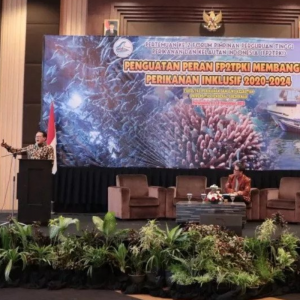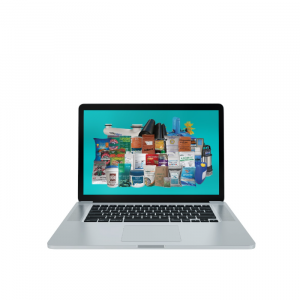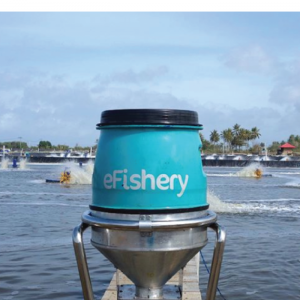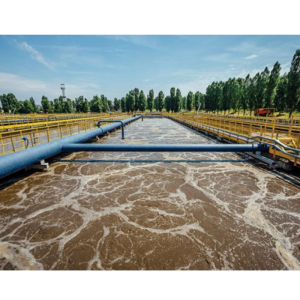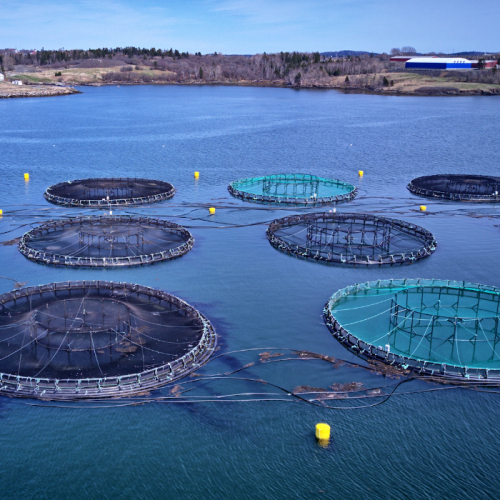
Aquaculture Becomes A Net-Positive
| Tue, 23 Feb 2021 - 14:56
The practice of farming finfish, shellfish and aquatic plants — by land and by sea — dates back 3,000 years as first the Chinese and then the Romans sought ways to supplement their food supplies with species such as carp and oysters.
In more modern times, support for aquaculture has ebbed and flowed along with concerns about animal health and welfare, worries over the effluent pollution caused by wastewater discharges, and the unintended impacts of production infrastructure such as pipes and pumps on natural ecosystems.
Also read: OptiFarm - Optimal Water Quality and Healthy Fish On Land
Now, a wave of technology innovation and funding from an eclectic group of companies ranging from Google’s parent Alphabet, to the Seed2Growth fund linked to Lukas Walton (grandson of Walmart founder Sam Walton), to Cargill and Chevron Ventures (both focused on fish-feed ventures) is changing the tide again.
In 2018, the last year for which figures were available, worldwide aquaculture production reached an all-time high of 114.5 million metric tons in "live weight," representing a market value of almost $264 billion, according to a 2020 report by U.N. Food and Agriculture Organization (FAO). That amount accounted for 52 percent of global fish consumption. The annual growth rate will slow over the next decade, but FAO projects aquaculture will supply close to 60 percent of fish consumed globally by 2030.
You have to be engaged in aquaculture, you have to be successful in aquaculture, to be successful in seafood.
Many factors contribute to this renewed surge in interest in farming fish and sea vegetables. Chief among them are worries over the long-term viability of global fisheries and concern over the fragility of food supply chains, sorely tested by disruptions related to the COVID-19 pandemic. The United States, for example, imports a vast majority of the salmon it eats, with long-term consequences for transportation-related emissions. The most dominant region in the world today for aquaculture production is Asia, particularly China, but Norway (for salmon) and Central America (for tilapia) are also big exporters.
"Expanding access to blue food — that is, sustainably grown marine and freshwater organisms including fish, shellfish and sea vegetables — can play an important role in reducing the carbon emissions associated with the food we eat … While sustainable aquaculture alone won’t solve the problem of reducing carbon emissions, seafood is one of the lowest carbon sources of protein available — so it’s a great place to make an impact on the climate crisis in the next five to 10 years," said Neil Davé, general manager of Tidal, an Alphabet X moonshot project.
Also read: Investor Urges Aquaculture to Align with The ‘Food Revolution’
The Tidal research team is testing artificial intelligence and imaging technology as a means to monitor fish health, spot pests and reduce waste at fish farms run by Norwegian seafood company Mowi, the world’s largest Atlantic salmon producer and ranked (again) in November as the world’s most sustainable protein producer by the FAIRR Initiative, which produces research for institutional investors interested in environment, social and governance issues.
Digital innovations such as Tidal’s that provide better insights into fish farming operations — alongside new recirculating aquaculture system designs and purification advances, such as the "nanobubbles" generators designed by startup Moleaer — are contributing to rising levels of speculative activity. Over the past four years, for example, more than 20 companies have filed development permits in Norway for new approaches, including several for semi-enclosed or enclosed cages that decrease the potential impact on ocean ecosystems.
The number of companies building land-based operations is also growing, notably in the United States. That’s important as more countries consider investing in sustainable domestic sources of production. A recent study by nonprofit WorldFish suggested that "inland freshwater aquaculture and marine capture fisheries have far greater potential to continue to supply most of the world’s aquatic food and contribute to human equity and food security than offshore marine finfish farming." These self-contained operations are designed to address concerns about wastewater discharges in coastal waters, as well as concerns over viruses, parasites and microplastics that plague ocean and coastal operations.
Also read: Waste Not: Novel Protein-Recapture Initiatives for Aquaculture
The downside: They are incredibly capital-intensive, costing millions to get up and running. Among the emerging U.S. players are Aquabanq (a Maine salmon concern), Infinity Blue (a brand raising barramundi with aspirations in Arizona), Innovasea Systems (based in Boston) and Pure Salmon (which is building an operation in Virginia).
Atlantic Sapphire, which is raising Bluehouse salmon on land in southern Florida and has invested upwards of $100 million in the facilities to do so, in November began selling its first fish raised without hormones, antibiotics or pesticides to supermarkets including the Publix supermarket chain. While its initial capacity is limited to about 10,000 metric tons of fish, the company aspires to supply 12 percent of the market by 2026. Its ultimate goal: 220 metric tons annually by 2030 — that’s nearly 1 billion salmon meals.
"By producing an increasing amount of seafood sustainably as farmers, the industry can help relieve pressure on wild stocks that might currently be overfished commercially. Raising salmon on land helps to avoid the effect on coastal areas, ensuring the well-being of our planet," observed Damien Claire, chief sales and marketing officer at Atlantic Sapphire.
Publix Super Markets is already making a big bet on aquaculture, not just with salmon but with species such as cobia, shrimp, pompano and tripletail. "You have to be engaged in aquaculture, you have to be successful in aquaculture, to be successful in seafood," noted Guy Pizzuti, business development director for seafood at Publix.
These are farms that bring back to the ocean as they bring back food.
Of course, there are other creatures in the sea aside from finfish. One notable difference between the aquaculture industry emerging this decade and the focus of the past is that it’s not all about cultivating more animals. Seaweed is the fastest-growing segment of the industry. It is being considered more often as a sustainable alternative to plastic packaging, which gives farmers another potential buyer.
For example, materials pioneer Loliware is creating seaweed straws that will be used by the likes of hotel chain Marriott and fast-casual restaurant chain Sweetgreen, which also has put kelp-inspired dishes on its menu. Food startup Akua is using kelp as a staple for jerky and pasta, and Blue Evolution is selling a range of products, including kelp popcorn. And in November, the Bezos Earth Fund made a $100 million grant to the World Wildlife Fund to support, among other things, the development of new markets for seaweed as an alternative to fossil fuel-based products.
One nonprofit organization, GreenWave, is even advocating the idea of "regenerative ocean farming." Its aim is to support the development of polycultural operations that combine a mix of seaweeds and shellfish that require zero artificial inputs.
Also read: There's an Ocean of Opportunity for Startups to Targeting The Seafood Industry
GreenWave’s pitch is that those with access to 20 acres, a boat and startup costs of $20,000 to $50,000 can start their own farm. Not only can these farms revive economic livelihoods for fishing communities that have seen local fisheries decline, they also can provide carbon sequestration benefits. One figure touted by the Eat More Kelp campaign suggests that the process of growing regenerative kelp can capture five times more CO2 than leafy vegetables such as kale or lettuce. "These are farms that bring back to the ocean as they bring back food," said GreenWave founder Bren Smith.
For food retailers such as Publix, the primary environmental benefit of supporting aquaculture includes the ability to offer customers a certified product vetted for ecological considerations such as wastewater management, water quality, effluent discharge and health. Two of the biggest challenges the evolving aquaculture industry must overcome, Pizzuti noted, are customer perceptions over the impact of aquaculture practices and the price premium they still must pay over fish and seafood sold by commercial fishing operations.
Still, as more food companies, investors and entrepreneurs cast their ideas into the ocean of aquaculture innovation, the greater the chances for a bountiful, sustainable catch.
Source: greenbiz.com













